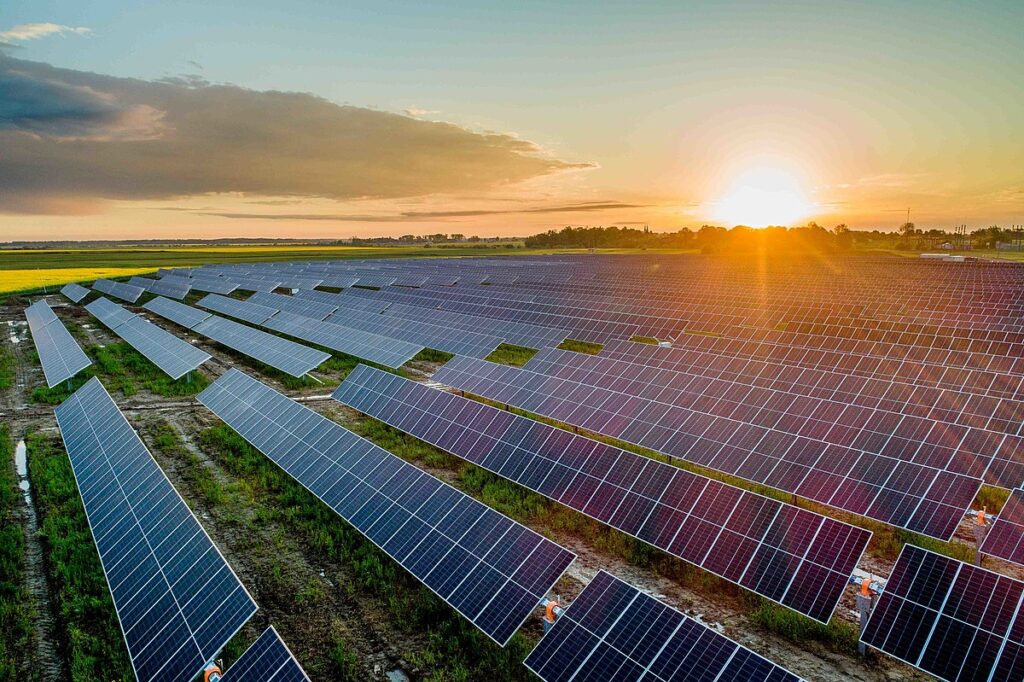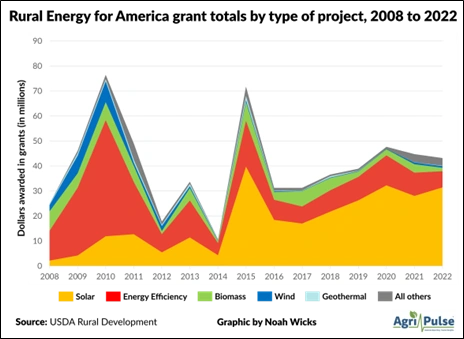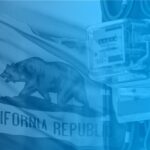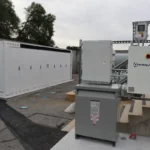The United States Department of Agriculture’s (USDA’s)Rural Energy for America Program (REAP) is an initiative promoting renewable energy production and energy efficiency for farms and rural businesses. The REAP program offers both loan guarantees and grants to rural businesses, farmers, and agricultural producers to encourage investments in renewable energy and energy efficiency projects. A stated goal of the program is to both increase energy independence and reduce energy costs for agricultural producers and rural small businesses. REAP funds may be used for renewable energy systems, including solar, wind, geothermal, and biomass projects, and for energy efficiency improvements, including lighting, insulation, HVAC, irrigation motors, and pumps. REAP was initially enacted by Congress in 2008 and has undergone numerous changes and evolutions. In 2014 the Agricultural Act bill authorized the REAP program to receive a mandatory $50 million in funding each fiscal year.
REAP changes from the IRA
The Inflation Reduction Act (IRA), signed into law by President Biden on August 16th, 2022, delivered roughly $370 billion in clean energy and carbon reduction investments. The IRA earmarked $3 billion specifically for renewable projects in rural areas, with approximately $1.7 billion set aside for REAP projects. The IRA also improved the funding levels of the REAP program, effectively doubling the cap level on REAP grants to 50% of the cost of a project, compared to the previous 25% cap. The total cost share from both grants and loans, can now range up to 75%. The IRA additionally set aside roughly $300 million for REAP grants and loans for “underutilized renewable energy technologies” that are not yet widely adopted.
REAP Program Basics
The USDA’s Rural Business-Cooperative Service administers REAP, which offers two types of assistance:
- Loan guarantees and grants to rural businesses for the purchase of renewable energy systems and for energy efficiency improvements
- Grants to service providers working with rural small businesses and farmers for renewable energy planning and energy audits
Ranchers, farmers, and rural small businesses are located in eligible areas with a population of 50,000 residents or less. Individuals or businesses can enter their addresses and checkeligibility status here. The REAP program has afact sheet here. For more information on how to submit an application, visit ‘To Apply’ at thislink (Rural Development U.S. Department of Agriculture).
The updated funding levels available are now:
- REAP grants can provide a maximum of 50% of the total cost of the activity using grant funds
- The program includes loan guarantees on loans that cover up to 75% of total project costs and combined loan guarantees and grants for up to 75% of total project costs
REAP Program History
Hundreds of millions of dollars in REAP grants have been awarded to renewable energy projects across the United States since 2008. Rural businesses and farmers have previously leveraged the program for projects including solar PV installations, wind turbine installations, irrigation motors, grain dryer replacements, and many other energy efficiency upgrades. Over the last few years, solar PV projects have been the largest beneficiary by a wide margin.
In fiscal year 2022, more than 900 of the 1,200 total grant awards were for solar PV projects. Additionally in FY 2022, of the $376 million in total loan guarantees, roughly $296 million went toward solar projects.
Updates in ETB
We have listed a REAP grant incentive on ETB Developer for several years, which previously capped at 25% of the total project cost. We have added a new incentive that now caps out at 50% of the project cost. Given that some REAP grants are awarded at an amount smaller than the cap, users can manually input the final awarded REAP grant incentive value as a user input.




